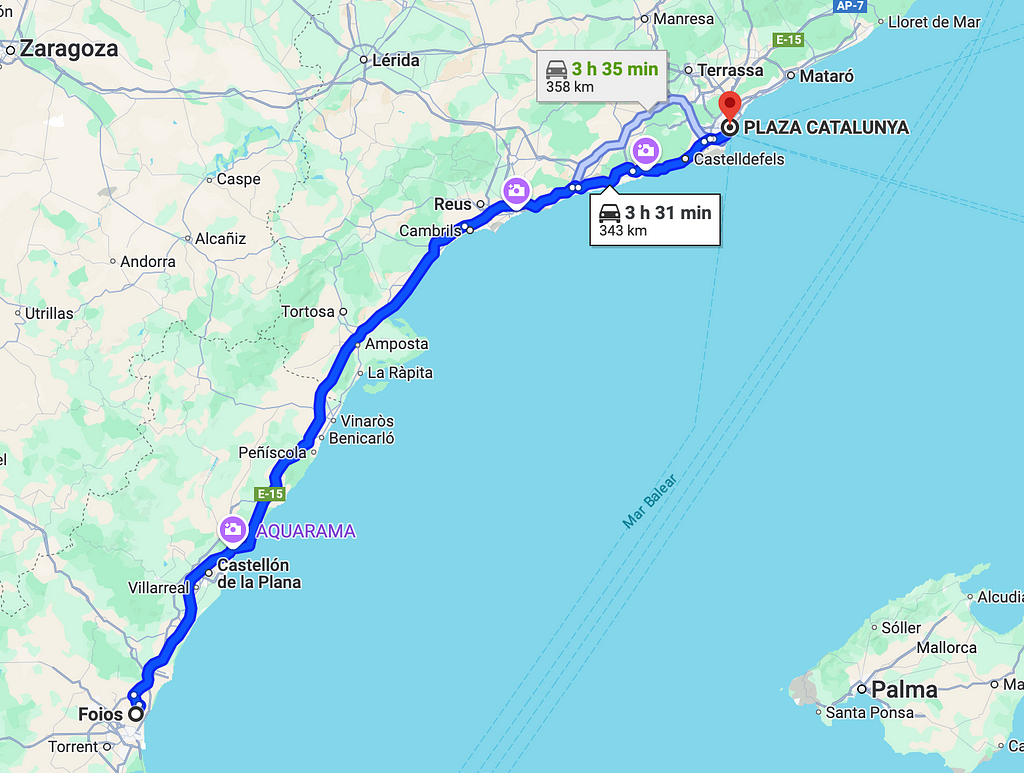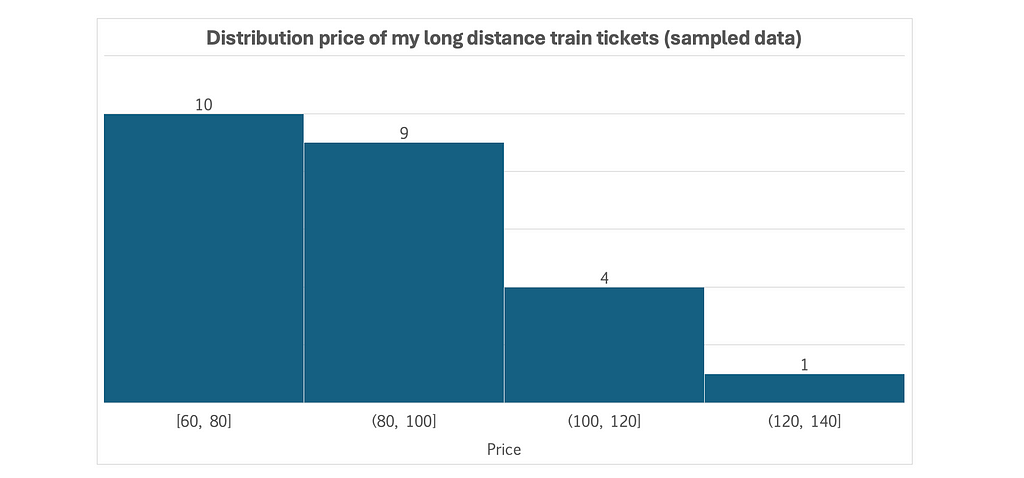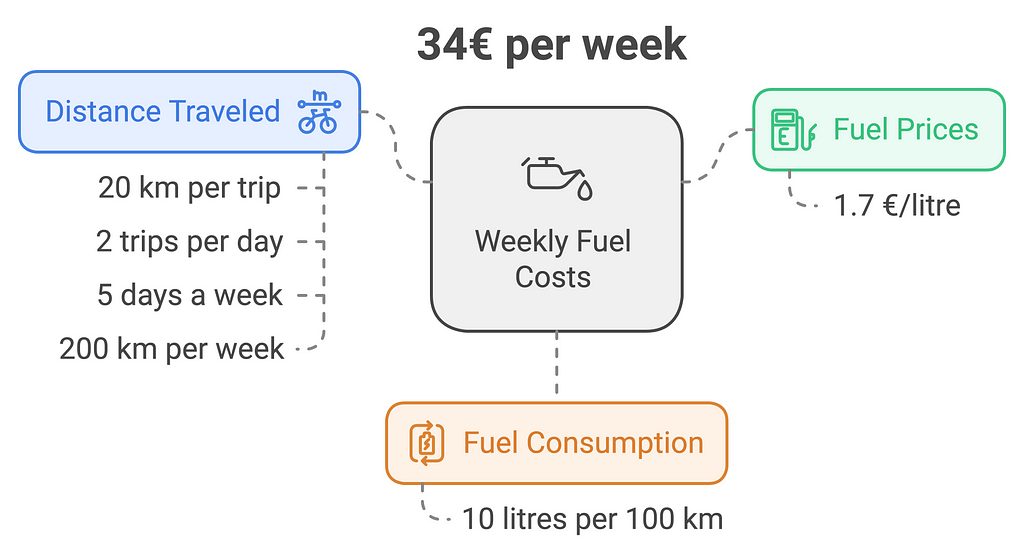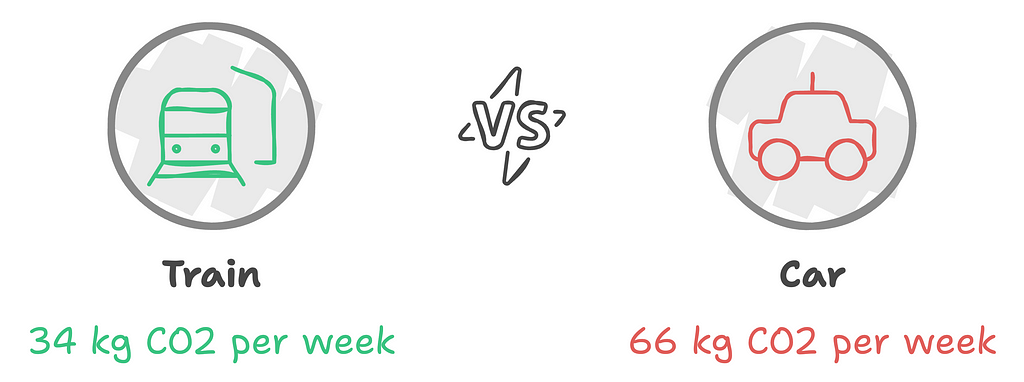My Commute to Work Is More than 4 Hours. Each Way.
Am I crazy, or does the data tell a different story?

I have a four-hour commute to work. Each way. That means travelling 8 hours plus a full day’s work. Some people would call me crazy, but here’s the thing: the numbers make sense. So when my family and I crunched the data, we decided not to move close to the city where my office is. This is the story of how that decision unfolded — and what the data shows about it.
PS 1: I have no affiliation with any of the companies running the surveys and data I use to crunch my commuting numbers.
PS 2: All images are authored by me unless otherwise specified.
A chat with my data science teams triggered writing this article.
Before getting into my commuting story, I thought it would be good to introduce why I got round to writing this article. With Amazon’s recent announcement about bringing more employees back to the office, our data science and data engineering teams have been a bit restless. The tech industry is one of those where working from home and hybrid work is more prevalent. At Skyscanner, our Data Science discipline is 40+ people strong and is scattered across London, Edinburgh, Barcelona and Shenzhen. The same happens to the teams we work with; the whole company is scattered across these 4 locations. Therefore, meetings predominantly happen over Zoom.
Whilst Skyscanner’s work from the office policy is not anywhere close to what Amazon is trying to implement, we had long ‘what-if scenario’ discussions. What would happen if our current 1–2 days in the office became more rigid? What doors would close — or open — if hybrid work as we know it disappeared? (I prefer to focus on the doors that have opened during these hybrid years).
This brings me to why I felt compelled to share my experience. By laying out my commuting journey and some hard-hitting statistics, I hope to encourage others to reflect on their own commuting patterns. Not only data scientists, but anyone who is a hybrid or remote worker. What trade-offs are you making that you might not have considered? Is the time spent commuting worth the benefits you receive? These are crucial questions that can shape our work experiences and personal lives, and we can all use data to inform our choices.
Covid19: The beginning of the story
In February 2020, I signed my contract to join Skyscanner. Just weeks later, the world changed as Covid-19 swept across the globe. My family and I relocated from London to Spain, and with Skyscanner’s work-from-home policy, it seemed like the perfect time to settle down in our hometown: Valencia. For two years, remote work was the norm — until it wasn’t. In 2024, Skyscanner asked employees to return to the office at least one or two days a week. This was when the real question hit: stay in Valencia or move to Barcelona?
Google Maps says I commute 686km in total.
Valencia to Barcelona
For those unfamiliar with Spanish geography, let me show you just how far apart these two cities are. In the screenshot below, you’ll see my home city of Valencia, and 343 km away, my office in Barcelona.

Let that sink in: 343 km away. That is 686 km round trip total. You cannot say this is a typical commuting distance.
The actual commute
Here’s how my typical commute to Barcelona looks, and yes, it’s a full-day affair:
- (30 mins, 6:00 to 6:30) Tube from home to the train station in Valencia. This part’s pretty straightforward, just a sleepy / reading metro ride while the city is still waking up.
- (3 hrs and 30 mins, 6:50 to 10:20) Train from Valencia to Barcelona. This is where the bulk of my commute happens. A few hours with my laptop or catching up on sleep. It sounds long, but I make it productive.
- (15 mins, 10:20 to 10:45) Tube from Barcelona train station to the office. Almost there, just one last quick hop on the metro.
- — Spend the day in the office —
- (15 mins, 17:00 to 17:15) Tube from the office to Barcelona train station. A quick video call with the family, checking in and hearing about their day.
- (2 hrs and 40 mins, 18:15 to 21:10) Train from Barcelona to Valencia. This is my downtime. I either catch up on work or indulge in a TV show (a rare treat with kids at home).
- (30 mins, 21:30 to 22:00) Tube from Valencia train station to home. By this point, I tend to be knackered. I listed to a football podcast or just about anything that doesn’t require brain power.
In total, close to 8 hours of travelling plus spending the day in the office.
How my commute measures up to Spanish standards (or averages)
WFH is not the commuting reality for most in Spain
Working from home is not widespread in Spain. In addition, there are multiple sectors where working from home is simply not an option. This means that lots of people are commuting to their workplaces five days a week. So, how much commuting would that be over a full week?
According to data from Eurostat [1], the average commuting time to work is 40 minutes. And of course, this is an average. I haven’t been able to find data specifically for Barcelona, but I would assume it is, at least, the same or higher. This means, 1 hour and 20 minutes per day. Which adds up to roughly 6 hours and 40 minutes per week.

Looking at the bigger picture, I’m definitely a bit of an outlier, but not by much. During my time in London, I knew many people who would surpass 8 hours of commuting each week. So, while being away from home for the entire day is a challenge, it’s reassuring to see I’m not alone in my commute struggle. Now, let’s turn our attention to another important dimension: commuting costs.
Is my commute a money drain?
The real cost of long-distance commuting
Taking a long-distance train is expensive. However, in Spain, it’s not as costly as you might think. Below, you can see the distribution of the cost of my train tickets.

Driving costs for a 5 day commute
According to Observatorio de Movilidad Arval [2], nearly 70% of people in Spain use their private car to commute to the office. In addition, if we take Madrid as an example, there was a study carried in 2010 [3] which showed that the average commuting distance was between 12 to 20 km. With this in mind, let’s run some high level numbers:
- 🚗 20 km * 2 times per day * 5 days = 200 km per week
- ⛽ Average fuel prices in Spain = 1.7 €/litre
- 📏 Average fuel consumption per 100 km = 10 litres per 100 km

The yearly comparison seems a bit scary

When I crunch the numbers, it’s hard to ignore the stark contrast: while the average commuter spends around €34 per week, my weekly ticket costs me €85. Over the course of a year, that gap adds up to a staggering €3,000! It’s a bit daunting to realize that my commuting expenses are two to three times higher than those of the average commuter.
Am I really losing money with this expensive commute?
As I have just shown, over a year, I could be spending more than 3,000 extra euros compared to the average commuter. But let’s factor in the cost of living. I currently reside in a cozy 100m² family house, complete with a 100m² garden and terrace. I bought it brand new in 2023 for €240k. Now, what would an equivalent home in Barcelona cost? A quick search on one of Spain’s leading real estate platforms reveals prices around €550k!

Just considering the price difference of the houses (and ignoring the mortgage and interest rate differences), I’ve saved a whopping €260k by choosing Valencia over Barcelona. So, while I’m shelling out an extra €3k a year in commuting costs, it would take me 86 years to bridge that gap. That’s a long time to wait just to break even!

In short, when it comes to cost of living, I’m confidently saying I’m much better off living in Valencia compared to Barcelona.
Let’s not forget about the environment
Everyone knows that trains are a greener choice
Driving is one the main sources of pollution we have in the planet. Trains tend to be much “greener”. Even though I am travelling drastically bigger distances than the average commuter, do I pollute as much?
According to Pawprint [4], on average we have the following:
- Petrol car: ~329.41 g CO2 per kilometer
- Train: ~49.71 g CO2 per kilometer
With my train commute covering 686 km each day, I’m generating approximately 34 kg of CO2 per round trip. In contrast, the average commuter travels about 200 km per week, resulting in an estimated 66 kg of CO2 emissions.

Surprisingly, even though my daily journey is three times longer, I’m emitting 50% less CO2 than the average commuter. So, while I might be spending extra time on the train, it seems my choice is much greener!
Finally, the intangibles
The numbers are clear: as long as I’m willing to endure a lengthy travel day once a week, both the costs and environmental impact tilt in my favour. But let’s talk about what you can’t put a price tag on. Here are some key intangibles that matter deeply to me or affect the way I work:
- Scattered teams: My colleagues are spread across Barcelona, London, Edinburgh, and Shenzhen. Being in the office more than once a week wouldn’t boost productivity; it would complicate collaboration. In fact, I have been in the office more than one day, and what happens is that I am closed in a meeting room, without much interaction with my colleagues.
- Settled kids: My children are happily settled in their schools, and uprooting them feels like a daunting chasm I don’t want to cross. Plus, the cost of private schooling in Valencia is significantly lower than in Barcelona — a factor I haven’t even included yet!
- Family ties: Both my wife’s and my families are based in Valencia. Having grandparents just 10 minutes away is invaluable. If we lived in Barcelona, those precious family gatherings would dwindle to a few times a year.
The list goes on, but I won’t bore you with a comprehensive rundown of every unquantifiable perk. Suffice it to say, these factors weigh heavily in my decision to stay in Valencia, making the commute feel a bit more worthwhile.
Rethinking your commute: what’s your trade-off?
As I reflect on my commuting journey, I can’t help but wonder: how many of us truly assess the trade-offs of our daily travel?
- What if you calculated your commute costs? Consider not only the financial aspect but also the time lost and the environmental impact. Would you still choose to commute the way you do?
- Could remote work be a viable option? If you’re stuck in a long commute, perhaps there’s room to negotiate flexibility with your employer.
- How does your commute affect your quality of life? From family time to mental well-being, think about what you’re sacrificing for that daily grind.
I encourage you to analyse your own commuting situation and think about alternatives. Whether it’s shifting to remote work, finding closer job opportunities, or optimising your current commute, there are options out there. Share your thoughts or experiences in the comments!
Summary
Some people think I am crazy when I tell them that I commute in the day, and once a week to Barcelona. However, the numbers are completely in my favour. Here is the summary table of the data points I have described in the article.

Further reading
If you are interested in more content related to data science and machine learning team management, here is an article capturing all my written blog posts on the topic.
Acknowledgments
- [1] Eurostat
- [2] Observatorio de Movilidad Arval
- [3] ABC Madrid
- [4] Pawprint green guide
Thanks for reading and I hope this post has been useful for all professionals leading data science, machine learning and analytics teams. If you have liked this content, follow me and feel free to chat on Linkedin.
My Commute to Work Is More than 4 Hours. Each Way. was originally published in Towards Data Science on Medium, where people are continuing the conversation by highlighting and responding to this story.
from Datascience in Towards Data Science on Medium https://ift.tt/ELIT60M
via IFTTT




